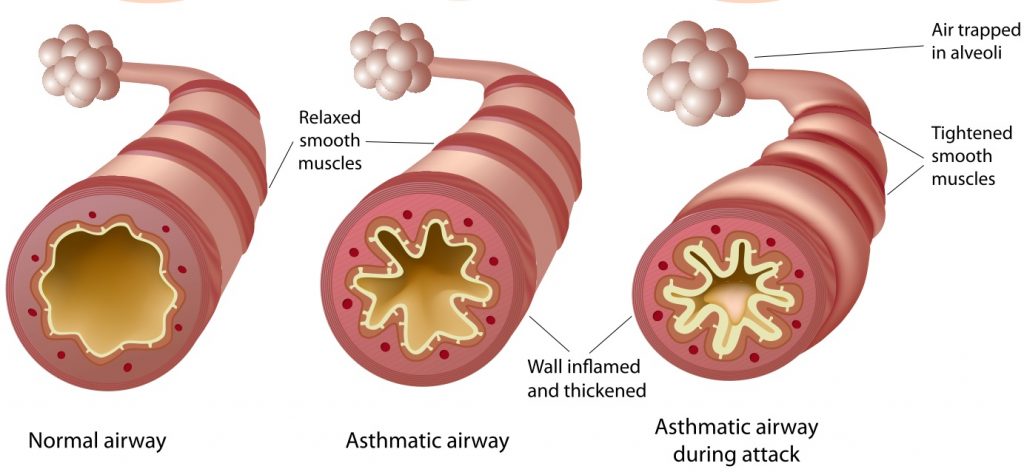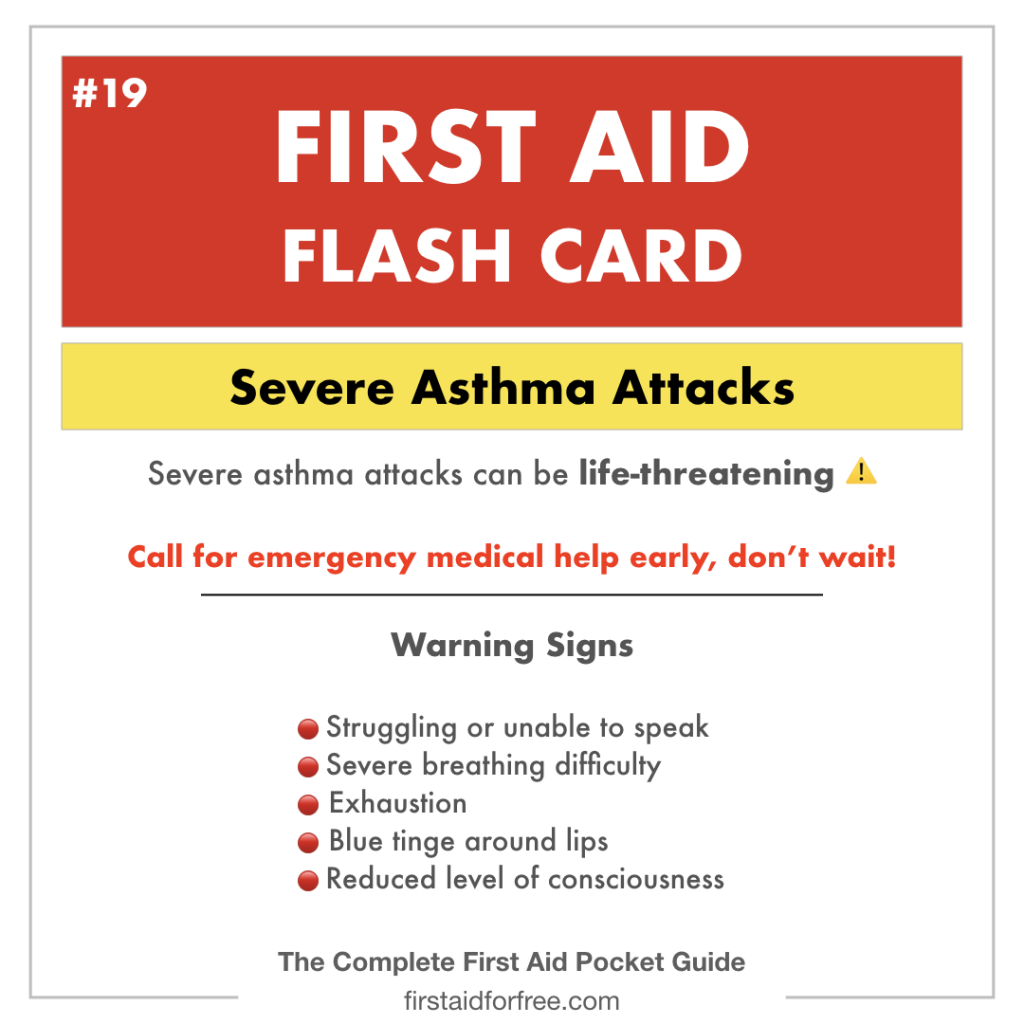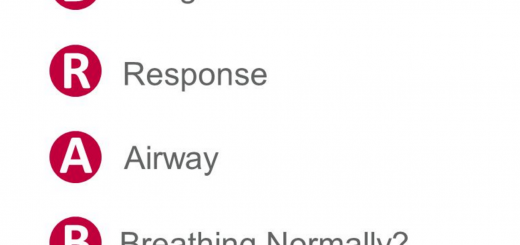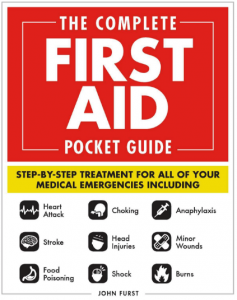First Aid Management of an Asthma Attack
Asthma is a common respiratory problem affecting approximately 5% of the population. People of all ages are affected.
Each year thousands of people die from acute asthma and many of these deaths are preventable. Early recognition and appropriate management are essential and part of the process that first aiders may be called upon to assist with.
The main problem in asthma is bronchospasm – widespread narrowing of the lower airways, as a result of constriction of the muscles surrounding them plus swelling of the airway lining.
In addition to this, there are increased secretions, which further add to the difficulty with the airflow through the small airways.

Signs and Symptoms of an Asthma Attack
The patient usually has a history of asthma and often carries medication. There will normally be wheezing, with the majority of this sound occurring during expiration (breathing out).
The severity of the asthma may be classified depending on the signs and symptoms present
Mild / Moderate Asthma
- speech normal
- respiratory rate less than 25 breaths per minute
- heart rate less than 110 beats per minute
Acute Severe Asthma
- unable to complete sentences
- respiratory rate greater than 25 breaths per minute
- heart rate greater than 110 per minute
Life Threatening Asthma
- no wheeze
- silent chest
- cyanosis (bluish tinge of the lips and skin)
- poor breathing effort
- slowing heart rate
- exhaustion
- loss of consciousness






